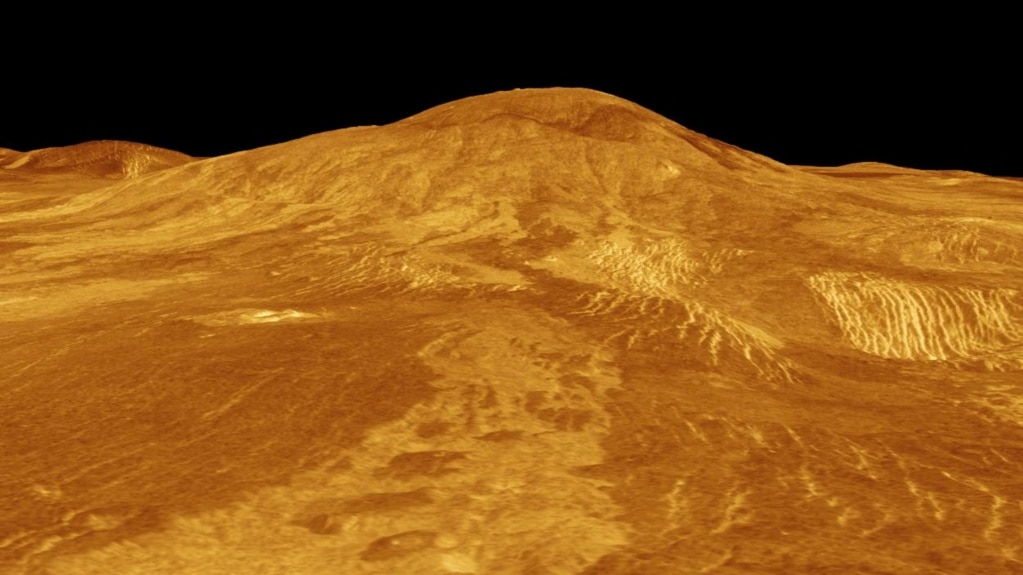New examinations of data collected from Venus suggest the planet is more volcanically active than previously thought.
The finding is based on radar images captured by Magellan, an orbiting spacecraft that the American space agency NASA operated. NASA officials have described Magellan as one of the most successful deep space missions in the agency’s history.
The spacecraft became the first to map nearly the whole surface of Venus during a five-year mission beginning in 1989. The orbiter made other discoveries about the planet as well. Venus is similar in structure and size to Earth and is also our closest planetary neighbor.
Italian researchers studied radar images captured by Magellan from 1990 to 1992. The effort resulted in the discovery of what the team believes to be large lava flows in two new areas.
The research team said the latest finding – combined with evidence from past studies – means the volcanic activity on Venus is likely comparable to Earth’s. The team recently published its results in a study appearing in Nature Astronomy.
Davide Sulcanese of Italy’s d'Annunzio University was the lead writer of the study. He told Reuters news agency, "These findings significantly change our understanding of the degree to which Venus is volcanically active.”
One of the two newly identified areas is near a volcano on Venus called Sif Mons. The volcano – which sits near an area called Eistla Regio – is estimated to be about 300 kilometers wide. Radar images from the area suggest a lava flow created a rock structure extending for 30 square kilometers.
The other big lava flow was discovered in a large volcanic plain in an area known as Niobe Planitia. The researchers said the rock structure created by this lava flow is about 45 square kilometers.
Scientists have estimated that both lava rock formations have an average depth between three and 20 meters. The team believes the lava flows were related to volcanic activities that were taking place during Magellan’s mapping mission.
Another co-writer of the study was planetary scientist Giuseppe Mitri of d'Annunzio University. He told Reuters both volcanoes are thought to be “shield volcanoes.” This means lava from the volcanoes flows easily because it faces less resistance.
Scientists say it is important to study active volcanoes to understand more about what happens below the planet’s surface. Volcanic activity can, they say, greatly affect how a planet grows and develops over time.
The new study builds on past evidence of ongoing volcanic activity on Venus. One 2023 study found a volcanic vent in another area called Atla Regio. The area is near the planet’s equator and contains two of the planet’s largest volcanoes.
The researchers said radar images showed that a vent on the surface had expanded and changed shape over an eight-month period in 1991. The discovered vent is on Maat Mons, the planet’s highest volcano.
But Sulcanese said the latest study "is the first to provide direct proof of lava flows formed during the Magellan mission period.” He noted that the additional evidence was identified because the radar images clearly observed changes “in surface morphology and radar data.”
Scott Hensley is a research scientist at NASA’s Jet Propulsion Laboratory in California. He said in a statement, “This exciting work provides another example of volcanic change on Venus from new lava flows that augments the vent change…reported last year.”
Hensley added, “This result, in tandem with the earlier discovery of present-day geologic activity, increases the excitement in the planetary science community for future missions to Venus.”
I’m Bryan Lynn

